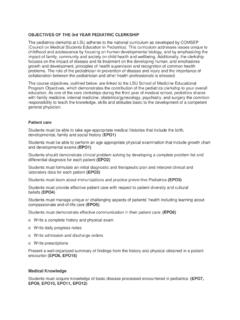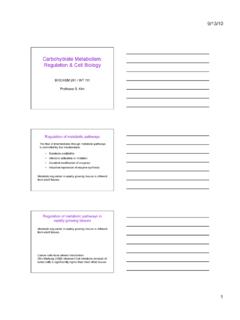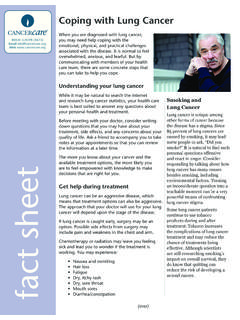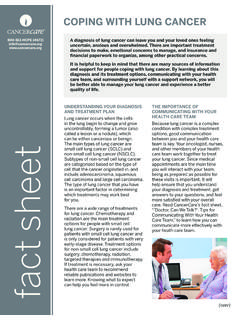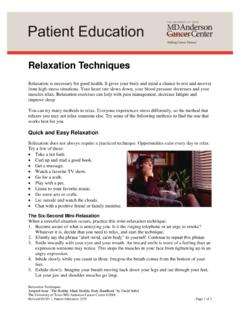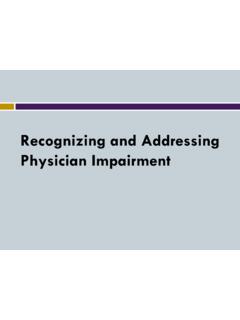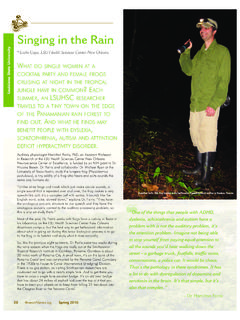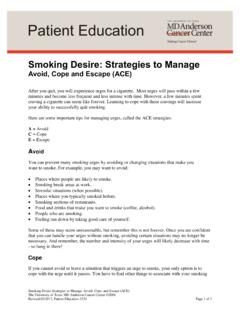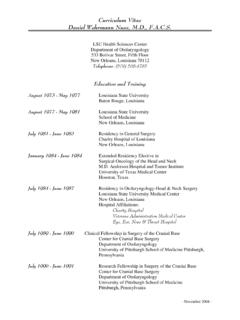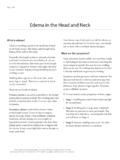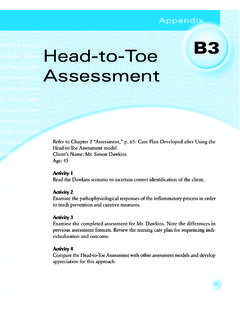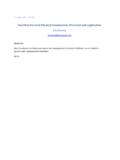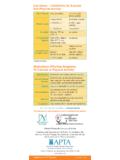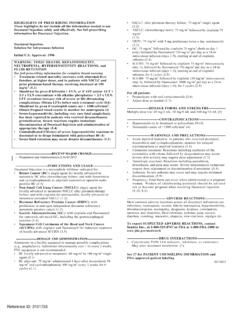Transcription of 1 THE HISTORY AND PHYSICAL (H & P)
1 1 the history and physical (H & P) I. Chief Complaint Why the patient came to the hospital Should be written in the patient's own words II. HISTORY of Present Illness (HPI) a chronologic account of the major problem for which the patient is seeking medical care according to Bates' A Guide to PHYSICAL Examination, the present illness ".. should include the onset of the problem, the setting in which it developed, its manifestations, and any treatments. The principal symptoms should be described in terms of their (1) location, (2) quality, (3) quantity or severity, (4) timing ( , onset, duration, and frequency), (5) the setting in which they occur, (6) factors that have aggravated or relieved them, and (7) associated manifestations.
2 Also note significant negatives ( , the absence of certain symptoms that will aid in differential diagnosis)." that part of the review of systems that pertains to the organ system involved in the problem for which the patient is seeking medical attention should be included in the present illness. It is not necessary to repeat this information in the review of systems later in the write-up. III. Past medical HISTORY (PHx) A. Childhood illnesses include measles, rubella, mumps, whooping cough, chicken pox, rheumatic fever, scarlet fever, polio B.
3 Immunizations ask about DPT (diphtheria, pertussis, tetanus), including 1. whether the immunizations were complete during childhood 2. when the last tetanus booster was given ask whether polio, measles, rubella, mumps vaccinations are up to date (for measles, include the number of immunizations received and the age at which the first immunization was given). ask whether the patient has received any other vaccinations, particularly (for adults) 1. pneumococcal 2. hepatitis B 3. influenza (yearly) C.
4 Adult illnesses give the type of illness, the dates it occurred, whether hospitalization was required (if so, where?), and a very brief summary of the illness (should be limited to one or two phrases if possible) D. Operations include what procedure was done, why it was done, when and where it was done, and whether or not there were any complications E. Allergies to what medications? Describe the type of reaction and how soon it occurred after the dose of medicine to what foods?
5 Describe type of reaction. F. Medications names of the medications doses that the patient takes how long they have been on the medicines and for what reasons (if there are multiple indications for which the medication may be used) G. Complimentary Treatments massage, acupuncture, herbals, vitamins, etc. IV. Family HISTORY include information about parents, siblings, maternal and paternal grandparents and aunts and uncles major diseases of importance: diabetes, hypertension, ischemic heart disease, stroke, kidney disease, tuberculosis, cancer, arthritis, hematologic disorders, mental illness 2 V.
6 Social HISTORY education, occupation, who the patient lives with, financial situation travel cigarette smoking expressed in number of pack years (number of packs smoked per day multiplied by the number of years that the patient has smoked gives you the number of pack years); if the patient has quit smoking, note how long ago. alcohol (what kind of liquor patient drinks, how much is drunk daily, and for how long has this pattern been going on) illicit drugs of any kind sexual HISTORY VI.
7 Review of Systems General: Usual weight, recent weight change, weakness, fatigue, fever, night sweats, anorexia, malaise Skin: Color changes, pruritus, bruising, petechiae, infections, rashes, sores, changes in moles, changes in hair or nails Head: Headache, head injury Eyes: Vision, glasses/contact lens, date of last eye examination, pain, redness, excessive tearing, double vision (diplopia), floaters (spots in front of eyes), loss of any visual fields, HISTORY of glaucoma or cataracts Ears: Hearing loss, change in hearing, ringing in ears (tinnitus), ear infections Nose and Sinuses: Frequent colds, nasal stuffiness, hay fever, nosebleeds (epistaxis), sinus trouble, obstruction, discharge, pain, change in ability to smell, sneezing, post-nasal drip, HISTORY of nasal polyps Mouth and throat: Soreness, dryness, pain, ulcers, sore tongue, bleeding gums, pyorrhea, teeth (caries, abscesses, extractions, dentures), sore throat, hoarseness, HISTORY of recurrent sore throats or of strep throat or of rheumatic fever Neck.
8 Lumps, swollen lymph nodes or glands, goiter (thyroid enlargement), pain Lymphatics: Swollen lymph nodes in neck, axillae, epitrochlear areas, or inguinal area Breasts: Lumps, pain, nipple discharge, self-examination, enlargement in men or children (gynecomastia) Pulmonary: Cough (duration, association with sputum production), change in chronic cough, trouble breathing (dyspnea), wheezing, coughing up blood (hemoptysis), pain with taking a deep breath (pleuritic chest pain), blue discoloration of lips or nailbeds (cyanosis), HISTORY of exposure to TB, HISTORY of a previous TB skin test and the results if done, recurrent pneumonia, HISTORY of environmental exposure Cardiovascular: Chest pain (including details), dyspnea, paroxysmal nocturnal dyspnea (abbreviated "PND".)
9 Patient will describe shortness of breath that improves when he or she sits up and dangles feet off the bed), orthopnea (patient has to sleep on pillows to prevent shortness of breath; quantitate by the number of pillows that the patient sleeps on), edema, palpitations, hypertension, known heart disease, HISTORY of a murmur, HISTORY of rheumatic fever, syncope or near syncope, pain in posterior calves with walking (claudication), varicosities, thrombophlebitis, HISTORY of an abnormal electrocardiogram Gastrointestinal.
10 Trouble swallowing (dysphagia), pain with swallowing (odynophagia), nausea, vomiting, vomiting blood (hematemesis), food intolerance, indigestion, heartburn, change in appetite, sensation of filling up earlier than usual (early satiety),frequency and character (formed vs. loose) of bowel movements, changes in bowel pattern, rectal bleeding, passing black tarry stools (melena), constipation, diarrhea, abdominal pain, excessive belching or passing of gas, hemorrhoids, jaundice, liver or gallbladder problems, HISTORY of hepatitis Urinary.
